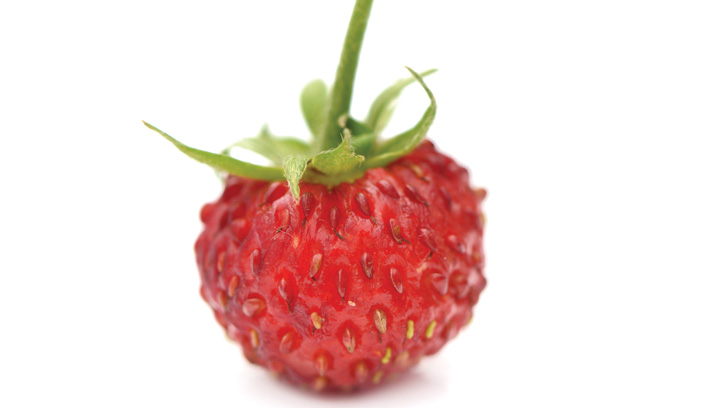Finding Flavor in Fungi
Science Forward | RESEARCH
Strawberry is a favorite flavor in the food industry, but producing wild strawberry flavor is a lofty goal. With a complex aroma and flavor and relatively rare occurrence in nature, wild strawberries are expensive and not as accessible as their cultured counterparts. So the fact that scientists have recently discovered a method that creates a wild strawberry–like flavor and solves a food waste problem could be a significant achievement.
Researchers at Justus-Liebig University in Giessen, Germany, have produced a wild strawberry-like flavor by using brown-rot fungi (Wolfiporia cocos) to ferment European black currant pomace. A byproduct of fruit juice production, pomace is usually discarded, but it is rich in nutrients, fatty acids, and flavonoids.
The scientists grew 23 fungi, which were cultivated in the dark at 24°C for up to two weeks, with sensory analysis performed at five intervals. “The fungi grew, and every day or every second day, we just used our noses to screen what happened,” says research co-author Holger Zorn, a professor at the University’s Institute of Food Chemistry and Food Biotechnology. “After having identified this pleasant aroma, we optimized the culture period and then went into highly sophisticated flavor analysis.”
Zorn’s lab has long worked with fungi to make vegan foods, among other products, but getting a pleasant flavor and aroma can be tricky. Some sidestreams used with fungi create pleasant flavors, some unpleasant flavors. Zorn and his colleagues screened several hundred strains growing on different sidestreams before coming up with a winner. “This combination of the sidestream with the fungus was the most interesting one,” he says. “That’s the reason we further worked on that, but the aim was not—to be honest—to produce the wild strawberry-type flavor.”
Good Scents
For chemical analysis and aroma assessment, the researchers used GC MS-O olfactometry, a gas chromatograph with a mass spectrometer, which splits the carrier gas into two signals: the chemical detection system signal and the odor impression. A PhD student seated at a “sniffing port” assessed the odor. To better gauge which smelling compounds contributed to the overall flavor, the team developed a new method called aroma dilution analysis. The method uses a stream of nitrogen to blow the flavors out of the material and onto a polymer absorber, which is heated up, Zorn explains. The heat releases the flavors into the code injection system. This process provides a high level of separation of flavor compounds.
Collecting flavors from surface cultures to industrial levels is another challenge, says Zorn. “What we have done so far is an analytical study, so we just determine the flavor,” he says. “It’s a more difficult task to isolate it in preparative amounts.”
He and his colleagues are now working on a method to transfer their system into liquid cultures because those are much easier to scale up to large volumes. However, initial tests have not quite replicated the wild strawberry aroma. “So far the aroma is not identical to that [which] we generate in surface and liquid cultures, which is also an interesting phenomenon,” Zorn observes. He says they are comparing the two to try and better understand what is causing the differences.
There is potential commercial value for this method, according to Zorn, because these compounds may be labeled as natural flavors since they are produced by a natural fungus from a natural starting material (although that would, of course, depend on local regulations). Natural flavor costs range between $1,000 and $10,000 per kilogram of material, he says. Synthetics are much cheaper.
Another paper, which like the strawberry flavor study was published in Agricultural and Food Chemistry, details the scientists’ research using a different fungus that also releases an interesting aroma. In this case, the aroma is described as “intensive coconut-like, sweetish, and buttery.”
The biochemistry that can create flavors from fungus is fascinating, says Zorn, adding that it’s not something that is known (so far) to occur independently in nature. “The fact itself that you have the fungus growing on peels and seeds of something and it produces such wonderful flavor compounds is really amazing as a phenomenon,” he marvels.


